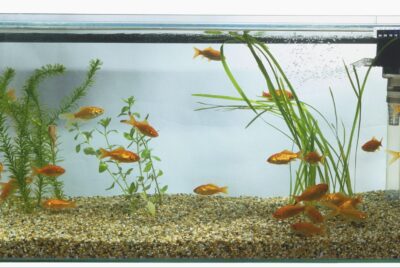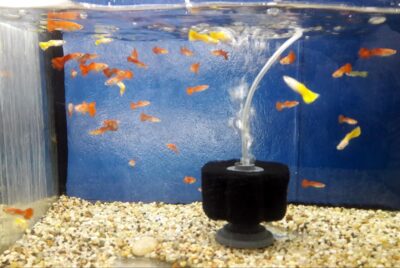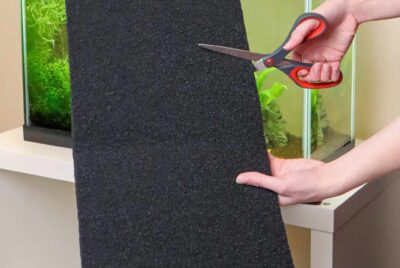Protein Skimmer
As a passionate fishkeeping enthusiast, I believe that maintaining a healthy and thriving aquarium is crucial. One essential piece of equipment that every serious aquarium hobbyist should consider investing in is a protein skimmer. In this article, I will guide you through the world of protein skimmers, explaining what they are, how they work, and why they are vital for your aquarium’s well-being.
What is a Protein Skimmer?
A protein skimmer, also known as a foam fractionator, is a device used to remove organic compounds, proteins, and other pollutants from aquarium water. These substances, if left unchecked, can accumulate and negatively impact the water quality, leading to problems such as algae blooms, foul odors, and even fish health issues.
How Does a Protein Skimmer Work?
It operates on the principle of foam fractionation. It creates a column of vigorously aerated water, generating a dense foam at the top. The organic compounds in the water are attracted to the foam bubbles, which rise to the collection cup, where they are skimmed off and removed from the system. This process effectively removes unwanted pollutants, making the water cleaner and healthier for the aquarium inhabitants.
Benefits of Using a Protein Skimmer
Investing in a protein skimmer offers several benefits for your aquarium:
Improved Water Quality
Protein skimmers efficiently remove organic compounds, proteins, and other pollutants, helping to maintain excellent water quality.
Reduction in Algae Growth
By removing excess nutrients, protein skimmers minimize the growth of nuisance algae, leading to a cleaner and more aesthetically pleasing aquarium.
Enhanced Oxygen Exchange
The vigorous aeration provided by protein skimmers improves oxygen exchange at the water surface, benefiting the fish and other organisms in the tank.
Prevention of Fish Health Issues
By removing organic waste and harmful substances, protein skimmers contribute to a healthier environment, reducing the risk of diseases and stress in fish and other marine life.
Factors to Consider When Choosing a Protein Skimmer
Size and Capacity
Consider the size of your aquarium and choose that is suitable for your tank’s water volume.
Efficiency
Look for a skimmer that offers efficient foam fractionation, ensuring effective removal of organic compounds.
Ease of Use and Maintenance
Opt for a protein skimmer that is easy to install, operate, and maintain. A user-friendly design will save you time and effort.
Noise Level
Some protein skimmers can be noisy, which can be bothersome in a quiet environment. Look for models that offer quiet operation.
Price
Determine your budget and find a skimmer that offers good value for the price. Consider the long-term benefits and quality of the skimmer.
Different Types of Protein Skimmer
There are several types of protein skimmers available in the market. Let’s explore the most common ones:
Hang-on-Back (HOB) Skimmers
These skimmers hang on the back of the aquarium and are ideal for smaller tanks or setups where sump space is limited.
In-Sump Skimmers
Designed to be placed in the sump, these skimmers are suitable for larger aquariums and provide excellent filtration capacity.
External Skimmers
These skimmers are placed outside the aquarium, often in a separate sump system, offering high efficiency and larger capacities.
Installing a Protein Skimmer
Proper installation is crucial for optimal protein skimmer performance. Here are some general installation tips:
- Follow the manufacturer’s instructions carefully for installation and setup.
- Position the skimmer near the water intake area to ensure maximum efficiency.
- Adjust the water flow rate and air intake to achieve the desired foam production.
- Regularly monitor and fine-tune the skimmer to maintain optimal performance.
Maintenance Tips for Protein Skimmer
To keep your protein skimmer operating at its best, follow these maintenance tips:
Regular Cleaning – (Protein Skimmer)
Clean the collection cup and skimmer body regularly to prevent the buildup of waste and ensure consistent performance.
Adjusting Water Flow and Air Intake – (Protein Skimmer)
Monitor the skimmer’s performance and adjust the water flow and air intake as necessary to optimize foam production.
Replacing Parts – (Protein Skimmer)
Over time, certain parts may wear out or become less efficient. Replace these parts as recommended by the manufacturer.
Troubleshooting Common Issues
Despite their effectiveness, protein skimmers may encounter some common issues. Here are a few troubleshooting tips:
- If the skimmer produces excess or wet foam, check for improper water flow or air intake adjustments.
- If the skimmer stops producing foam, ensure the collection cup is properly cleaned and check for clogged air or water lines.
- If the skimmer becomes noisy, inspect the impeller for debris or wear, and clean or replace it if necessary.
Best Practices for Optimal Protein Skimmer Performance
- Provide consistent water parameters, such as stable salinity, pH, and temperature, as fluctuations can affect skimmer performance.
- Avoid using medications or additives that may interfere with the skimmer’s ability to remove organic compounds.
- Keep it running 24/7 for continuous water purification.
How to Choose the Right Protein Skimmer for Your Aquarium
Choosing the right protein skimmer can be overwhelming. Consider the factors mentioned earlier, evaluate your specific needs, and read customer reviews to make an informed decision. Remember, investing in a high-quality will benefit your aquarium in the long run.
Conclusion
In conclusion, it is an essential tool for maintaining a healthy and thriving aquarium. Its ability to efficiently remove organic compounds and pollutants helps to improve water quality, reduce algae growth, and promote the well-being of your fish and other aquatic life. By following the installation, maintenance, and troubleshooting tips outlined in this article, you can ensure that it performs optimally and contributes to a clean and vibrant aquarium environment.
Frequently Asked Questions – (Protein Skimmer)
Q: How often should I clean the collection cup of my protein skimmer?
A: The frequency of cleaning the collection cup depends on the skimmer’s performance and the amount of waste being skimmed. As a general guideline, check the cup every week and clean it when it’s about two-thirds full or when the foam starts to overflow.
Q: Can I run it without a sump?
A: Yes, you can run certain protein skimmers, such as hang-on-back (HOB) skimmers, without a sump. They are designed to hang on the back of the aquarium and provide effective filtration for smaller setups.
Q: Should I turn off the protein skimmer when adding medications to my aquarium?
A: It is generally recommended to turn off the protein skimmer temporarily when adding medications or certain additives that may interfere with the skimmer’s function. However, always refer to the specific instructions provided with the medication or additive to ensure proper usage.
Q: Why is my protein skimmer producing dry foam instead of wet foam?
A: Dry foam is an indication of excessive air intake or insufficient water flow. Adjust the air intake and water flow to achieve the desired consistency of foam. The foam should be moist but not too wet or dry.
Q: Can a protein skimmer be used in a freshwater aquarium?
A: While protein skimmers are most commonly used in saltwater or marine aquariums, they can also be beneficial in freshwater setups, especially those with high organic loads or heavy fish stocking. However, keep in mind that freshwater skimming is not as common, and it’s crucial to monitor the water parameters closely when using a protein skimmer in a freshwater environment.




